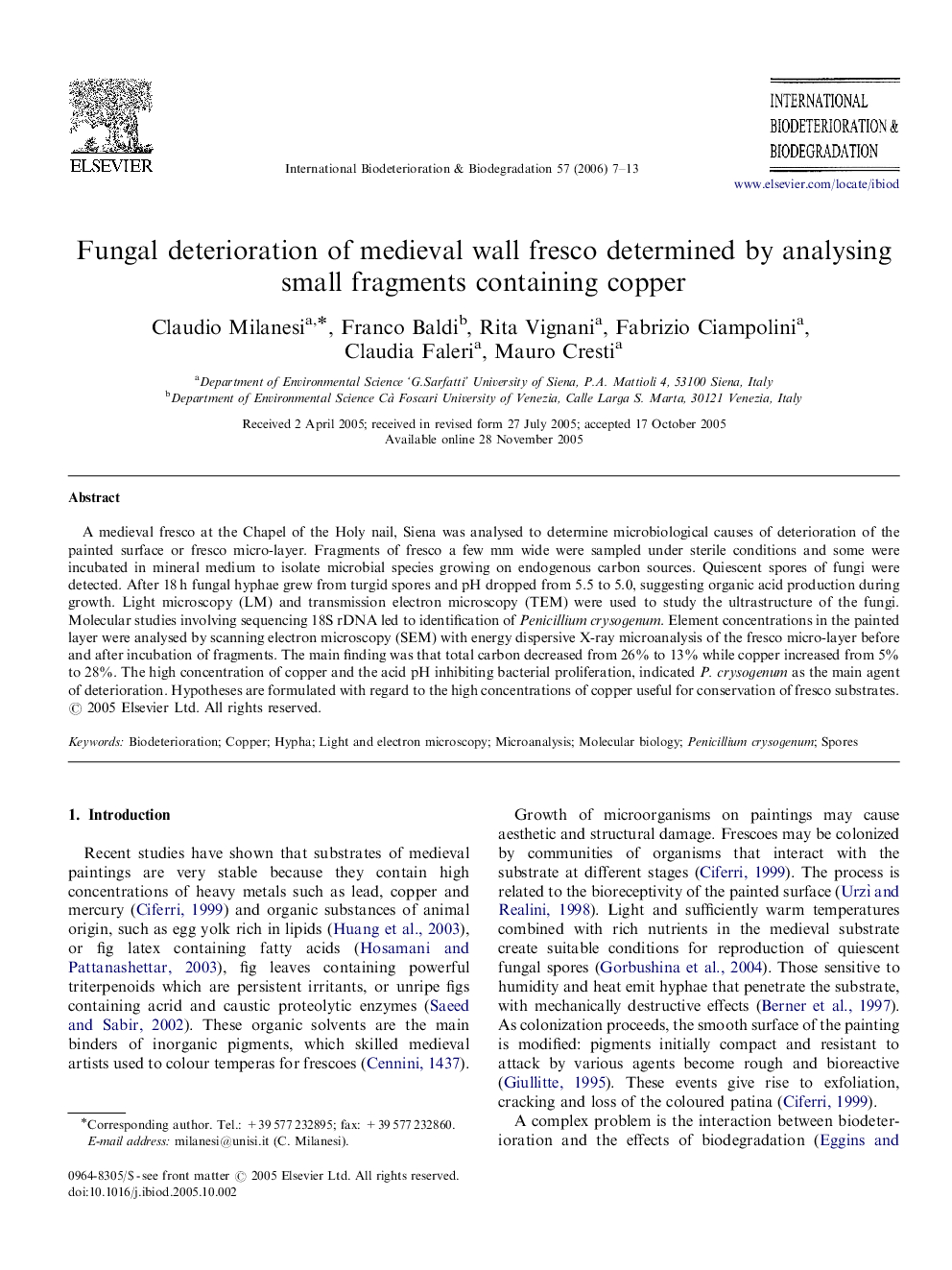| کد مقاله | کد نشریه | سال انتشار | مقاله انگلیسی | نسخه تمام متن |
|---|---|---|---|---|
| 4366099 | 1301820 | 2006 | 7 صفحه PDF | دانلود رایگان |

A medieval fresco at the Chapel of the Holy nail, Siena was analysed to determine microbiological causes of deterioration of the painted surface or fresco micro-layer. Fragments of fresco a few mm wide were sampled under sterile conditions and some were incubated in mineral medium to isolate microbial species growing on endogenous carbon sources. Quiescent spores of fungi were detected. After 18 h fungal hyphae grew from turgid spores and pH dropped from 5.5 to 5.0, suggesting organic acid production during growth. Light microscopy (LM) and transmission electron microscopy (TEM) were used to study the ultrastructure of the fungi. Molecular studies involving sequencing 18S rDNA led to identification of Penicillium crysogenum. Element concentrations in the painted layer were analysed by scanning electron microscopy (SEM) with energy dispersive X-ray microanalysis of the fresco micro-layer before and after incubation of fragments. The main finding was that total carbon decreased from 26% to 13% while copper increased from 5% to 28%. The high concentration of copper and the acid pH inhibiting bacterial proliferation, indicated P. crysogenum as the main agent of deterioration. Hypotheses are formulated with regard to the high concentrations of copper useful for conservation of fresco substrates.
Journal: International Biodeterioration & Biodegradation - Volume 57, Issue 1, January 2006, Pages 7–13